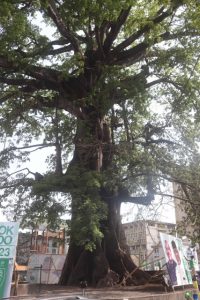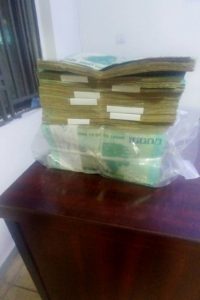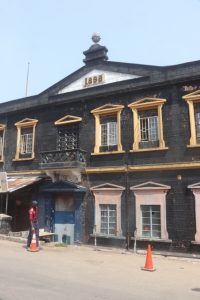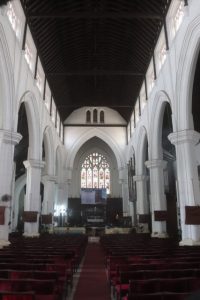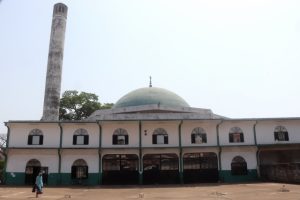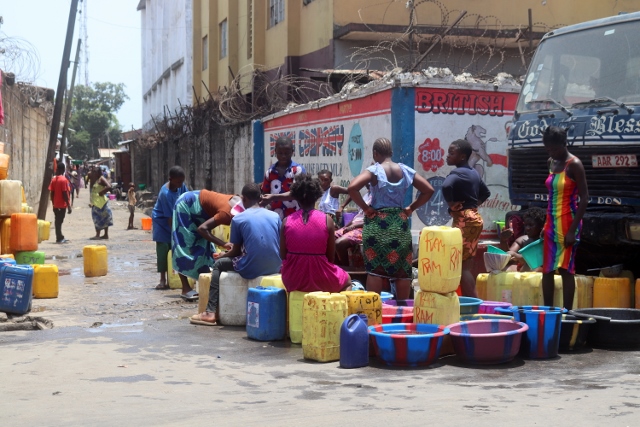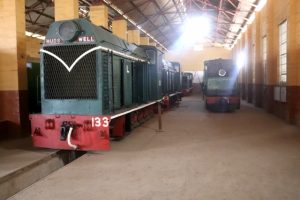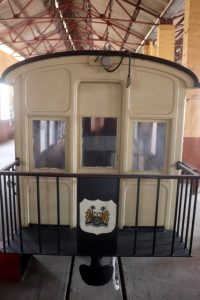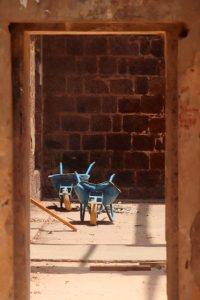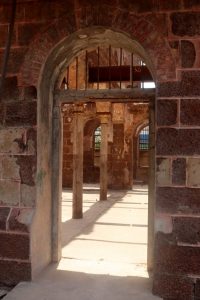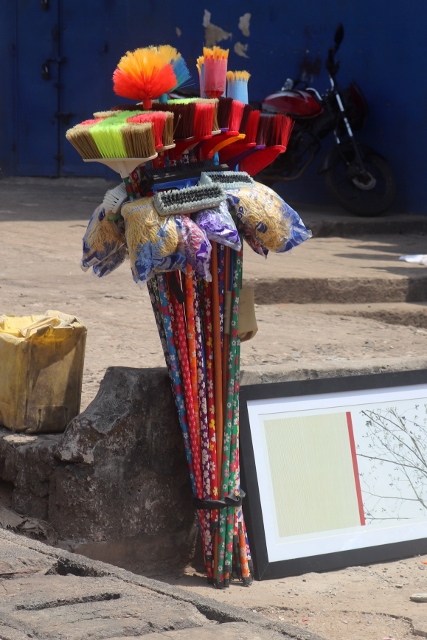We need to change money. ATMs are no good, because the maximum they dispatch is the equivalent of 40 US$. Our cash dollars are good for local currency, the Leone, which confusingly comes in old and in new notes. We briefly feel ourselves a millionaire, with all these LE 10,000 notes, until we realise that these are the same as a new LE 10 note – which, incidentally, doesn’t look new at all anymore. LE 10 is worth about 5 cents – there are notes of LE 20, the highest denomination available, but they are elusive. A few hundred dollars in LE is a significant stack of money. I now understand why ATMs dispatch so little, a thicker pack simply doesn’t fit.
Freetown
The Cotton Tree is Freetown’s most famous landmark. So what better place to start our walk through town? This enormous tree became significant for the freed slaves who returned to Africa, in this case Freetown, and held a thanksgiving service under the tree, for their newly gained freedom. The tree is first mentioned in 1787, but is quite likely much older.
Close to the tree is the Saint George’s cathedral, which was finished in 1828. To be honest, it is not the most beautiful church building I have ever seen, and the scaffolding doesn’t help – but it means that at least the building is being maintained. More remarkable are the plaques inside, in remembrance of people who died. Many of them go back to the early and mid-19th Century, from just after the church had been completed; I imagine that quite a few were early arrivals to the colony. Some died in battle – a week after arriving! -, others from epidemics. Some were important officials, others have no mention of their function – but being buried here probably means they were important enough.
This is also the old port area, I think, and some of the houses look from colonial times. Not particularly pretty, most in bad condition, although some have been, or are being patched up. But this is not such a nice area, lots of young people making clear to us that they expect us to pay them because they are poor and we are, in their eyes, rich. We are, of course, but giving each and every individual person some money is not going to solve the problems of this country – or each West African country we have been so far, this is a recurring theme.
We move on to what is called Magazine Market, a vast area of stalls selling everything from shoes to cloths to kitchen utensils to brooms. Almost no food, but everything else is available here. And is being announced through automatic loudspeakers that repeat their message every 15 seconds. Mixed with the shouting of people, the horns of tuk-tuks and motorbikes that insist on passing through, and all the other sounds that I cannot pin down, this is an incredible collection of noise. And a great atmosphere, most Sierra Leoneans are good humoured and fun, curious where we are from, and in for a chat. Even if the ulterior motif may be to ask us for money later on.
It being its usual humid and hot, we take a tuk-tuk to the National Railway museum, a museum with a story. The Sierra Leone railways closed up shop in 1975, when it became clear that trucks were more efficient than trains and investment in roads was preferred over rail track. What didn’t help was that the three then existing lines had two different rail gauges. Somebody parked the remaining rolling stock in a shed. Where it remained, shielded from the civil war, until a rail enthusiast discovered the stuff, and managed to convince the president to turn the shed into a museum. Which is nice enough, with the Queen’s carriage – specially made for Queen Elizabeth’s visit in 1960, but never used because of a change in her schedule -, the governor’s carriage – including bedroom and bathroom, and governor’s suitcase – and several steam and diesel engines.
Nearby is the first Western-style education facility in West Africa, or so it claims, the Fourah Bay College. Well, it used to be an education facility, apparently opened in 1827, and developed into the first Black African university in 1876. The building we look at dates from 1848, now dilapidated, but remarkably solid thanks to its metal pillars and beams. Floors have collapsed, the roof is gone, but the metal staircase is still in good shape, as is the metal decoration in the front.
By now it is well into the early afternoon, and too hot to do much else – like exploring the food market which we identified -, except taking a kekeh to a local supermarket and stock up on wine and cheese. No exactly to our usual standards, but beggars are no choosers.
Next: another day in Freetown
